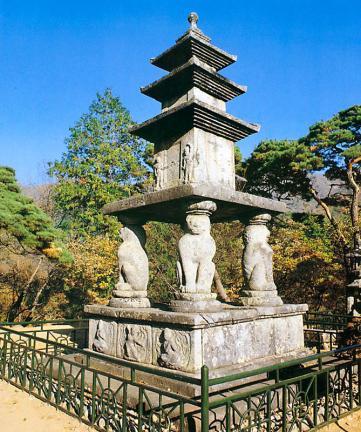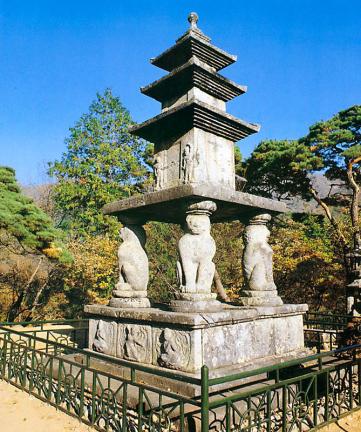국가유산 검색
국보
구례 화엄사 사사자 삼층석탑 (求禮 華嚴寺 四獅子 三層石塔)Four Lion Three-story Stone Pagoda of Hwaeomsa Temple, Gurye
| 분 류 | 유적건조물 / 종교신앙 / 불교 / 사찰 |
|---|---|
| 수량/면적 | 1기 |
| 지정(등록)일 | 1962.12.20 |
| 소 재 지 | 전남 구례군 마산면 화엄사로 539 (황전리) / (지번)전남 구례군 마산면 황전리 산20-1 |
| 시 대 | 통일신라시대 |
| 소유자(소유단체) | 화엄사 |
| 관리자(관리단체) | 화엄사 |
















